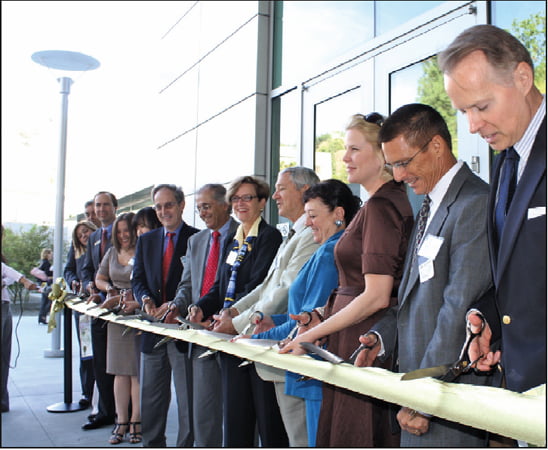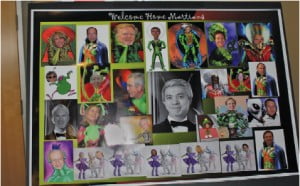
A new building at the Jet Propulsion Laboratory
has received the LEED [Leadership in Energy
and Environmental Design] Gold Certification.
By Mary O’KEEFE
At a Monday morning ribbon cutting ceremony at JPL the doors to NASA’s greenest building to date were officially opened. JPL officials and dignitaries were there to help the lab celebrate the six-story, 193,491 square-foot building that was nine years in the planning and $70 million in the making.
“This is a really special day,” said Charles Elachi, JPL director.
The Space Flight Projects building will house missions during their design and development phases. It will allow engineers and scientists a place to work as a team to prepare for future missions.
“We view this like a hotel. You move in for awhile,” said Randall Wagner, supervisor of facilities project manager.
Since its conception the building was designed to be a shining example of green technology. Some of the green features include a vegetated roof that acts as a natural insulation, outdoor lighting used for safety and is directed toward the ground reducing light pollution, low-flow faucets and toilets to reduce water use by 40% compared to typical fixtures, improved wall insulation, window shading devices and a janitorial staff that uses green cleaning products and practices.
In addition over 75% of the waste generated during construction of the new building was diverted from a landfill to a local recycling facility and some was used in the construction of the building, Wagner said.
The building received the LEED Gold Certification under the leadership of the Leadership in Energy and Environmental Design rating system, established by the nonprofit U.S. Green Building Council.
The building’s ribbon cutting was originally scheduled for Sept. 1 but was postponed due to the Station Fire. The building is currently half occupied by missions that include Mars Science Laboratory, Juno mission to Jupiter and Kepler, a telescope that will be searching for Earthlike planets.
The building includes showers to promote employees who wish to exercise during lunch or ride their bikes to the lab. There is a workout room that is open to all employees. The lighting is reflective and softer than the normal florescent office lighting. The offices and cubicles are designed to allow more sunlight in, and a common meeting room is in the center of the rows. “People who are working on missions are not working 40 hours, nine-to-five workdays. Some work 24/7,” Wagner said.
Congressman David Dreier was at the ceremony and praised JPL not only for their work in space but for their environmental responsibility. He stated, “If you think about where we are heading environmentally, it is so apparent to me that while JPL focuses its attention on the worlds beyond our world there is a realization that we still live on this world and, by virtue of that, it is imperative that we have to do everything we possibly can to recognize how pr cious this planet is.”

